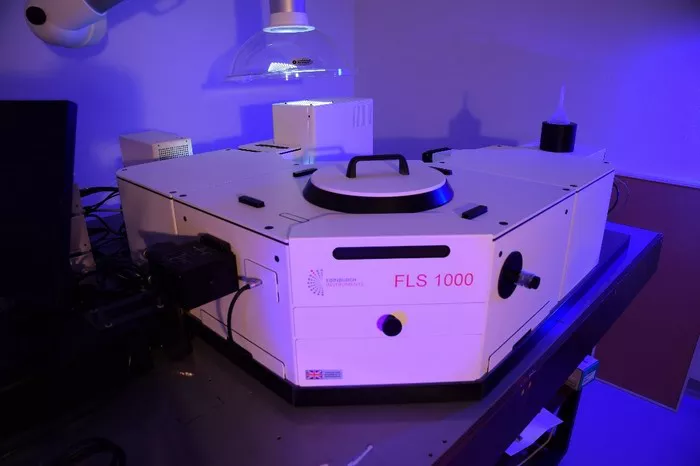Mass spectrometry (MS) is a powerful analytical technique used in various scientific and industrial fields to identify and quantify chemical compounds. A mass spectrometer is an instrument that measures the mass-to-charge ratio of ions to determine molecular composition, structural characteristics, and the presence of specific elements within a sample. Over the years, this technology has evolved significantly, making it indispensable in fields such as chemistry, medicine, forensics, environmental science, and material analysis.
This article provides an in-depth overview of mass spectrometry, explaining its working principles, types, and key applications.
How a Mass Spectrometer Works
A mass spectrometer operates in three main stages: ionization, mass analysis, and detection. Each step plays a crucial role in analyzing the sample accurately.
1. Ionization
Before a substance can be analyzed, it must be converted into ions. There are several ionization techniques, depending on the nature of the sample:
Electron Ionization (EI): Common in organic chemistry, this technique bombards molecules with high-energy electrons to form positive ions.
Electrospray Ionization (ESI): Used in biochemistry and proteomics, ESI creates charged droplets that eventually yield gas-phase ions.
Matrix-Assisted Laser Desorption/Ionization (MALDI): Frequently used in biological research, MALDI uses a laser to ionize large biomolecules like proteins and peptides.
2. Mass Analysis
Once the sample is ionized, the mass spectrometer separates ions based on their mass-to-charge ratio (m/z). Different types of mass analyzers are used, including:
Quadrupole Mass Analyzer: Uses oscillating electric fields to filter ions of a specific m/z value.
Time-of-Flight (TOF) Analyzer: Measures the time ions take to travel a fixed distance, with lighter ions reaching the detector faster.
Magnetic Sector Analyzer: Uses a magnetic field to bend the path of ions, allowing separation based on their mass.
Orbitrap and Fourier Transform Ion Cyclotron Resonance (FT-ICR): High-resolution techniques for precise mass measurements.
3. Detection
After mass separation, the ions are detected and converted into a spectrum, representing their abundance versus their mass-to-charge ratio. The resulting mass spectrum helps in identifying the molecular structure of the sample.
Key Applications of Mass Spectrometry
Mass spectrometry has a wide range of applications across multiple industries and scientific disciplines. Here are some of its most significant uses:
1. Pharmaceutical and Biomedical Research
Mass spectrometry plays a crucial role in drug discovery and development. It helps:
- Identify and characterize new drug compounds.
- Monitor drug metabolism and pharmacokinetics.
- Detect biomarkers for disease diagnosis.
- Ensure quality control and regulatory compliance in pharmaceutical manufacturing.
2. Proteomics and Biotechnology
Proteomics, the study of proteins, heavily relies on mass spectrometry. It is used to:
- Identify and sequence proteins.
- Analyze post-translational modifications.
- Study protein interactions and structural biology.
- Develop targeted therapies for diseases such as cancer.
3. Environmental Analysis
Environmental scientists use mass spectrometry to:
- Detect pollutants in air, water, and soil.
- Monitor pesticide residues in food and agriculture.
- Study atmospheric chemistry and climate change factors.
4. Forensic Science
Mass spectrometry is an essential tool in forensic investigations, helping to:
- Identify drugs, toxins, and poisons in biological samples.
- Analyze trace evidence such as paint, explosives, and gunshot residues.
- Confirm the authenticity of documents and artworks.
5. Food Safety and Quality Control
The food industry relies on mass spectrometry for:
- Detecting contaminants such as heavy metals, pesticides, and adulterants.
- Authenticating food products and detecting fraud.
- Ensuring compliance with safety regulations.
6. Space Exploration and Astrobiology
Mass spectrometers are used in space missions to analyze extraterrestrial materials. For example:
- The Curiosity rover on Mars uses a mass spectrometer to study the planet’s composition.
- Space probes analyze comets and asteroids to understand the origins of the solar system.
7. Material Science and Nanotechnology
Mass spectrometry aids in characterizing materials and studying nanostructures. It helps:
- Analyze the composition of advanced materials and coatings.
- Investigate properties of semiconductors and superconductors.
Types of Mass Spectrometry
Different mass spectrometry techniques are suited for specific applications. Some of the most widely used types include:
Gas Chromatography-Mass Spectrometry (GC-MS): Common in forensic and environmental analysis, GC-MS combines gas chromatography with mass spectrometry to separate and identify volatile compounds.
Liquid Chromatography-Mass Spectrometry (LC-MS): Widely used in pharmaceuticals and proteomics, LC-MS is suitable for analyzing complex biological samples.
Inductively Coupled Plasma Mass Spectrometry (ICP-MS): Used for detecting trace metals in environmental and industrial samples.
Tandem Mass Spectrometry (MS/MS): A technique that involves multiple stages of mass analysis, improving specificity and sensitivity in detecting complex molecules.
Advantages and Limitations of Mass Spectrometry
Advantages
High Sensitivity and Specificity: Can detect minute quantities of substances.
Wide Range of Applications: Used in multiple scientific disciplines.
Rapid Analysis: Provides quick and accurate results.
Structural Information: Helps determine molecular structure and composition.
Limitations
High Cost: Expensive equipment and maintenance.
Complex Data Interpretation: Requires specialized knowledge and software.
Sample Preparation: Some samples require extensive preparation before analysis.
Conclusion
Mass spectrometry is a versatile and powerful analytical technique that has revolutionized scientific research and industrial applications. From pharmaceutical development and environmental monitoring to forensic science and space exploration, mass spectrometry provides invaluable insights into the composition and structure of matter. While it has certain limitations, its advantages far outweigh them, making it an indispensable tool in modern analytical science. With ongoing technological advancements, mass spectrometry will continue to play a pivotal role in expanding our understanding of the world at a molecular level.

